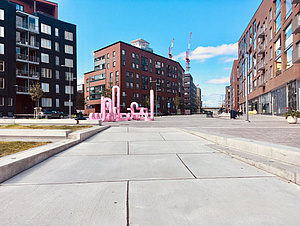Cities around the world are using information and communication technologies, among other ways, to address current urban challenges such as global warming, pollution, and resource scarcity. The demand for new, modern, energy-efficient urban districts is increasing. They should be highly versatile: able to conserve resources, be socially acceptable, cost-effective, resilient, energy sustainable, and generally improve the quality of life for residents. Global pilot projects such as “Songdo” or “Masdar City” show that the one-sided focus on technological solutions can increase efficiency in the neighborhood, but not the spatial qualities or the quality of life for the residents. In this context, there is a lack of spatial engagement with the urban digitalization process at the interface between energy efficiency and urban planning, which highlights the need for a smart-spatial nexus. Smart city concepts are increasingly impacting urban space. The spatial interactions between the physical urban space, digital technologies, and energy innovations need to be considered simultaneously in order to realize the potential of energy efficiency in the neighborhood.
The publication Technical Tours Smart Cities 2014-2018 is a project report produced as part of the “Stadt der Zukunft – City of Tomorrow” program; it summarizes the most important findings of the Technical Tours from 2014 to 2018. The aim was to present this knowledge in a compact form and make it accessible to a wider audience. A large number of examples with various qualities from the Technical Tours were published. Photo documentation of the “good practice” neighborhoods was also provided, which primarily shows the important spatial qualities of the Smart City neighborhoods, in order to highlight the effects and possibilities regarding the influence on the quality of life. This, therefore, demonstrates the relevance for the success of Smart City neighborhoods, alongside the factor of energy efficiency.
Project duration:
October 2016 to February 2020
Funding:
The Austrian Research Promotion Agency (FFG)
Project team:
Institute of Urbanism: Aglaée Degros, Eva Schwab, Radostina Radulova-Stahmer, Nina Habe, Ernst Rainer, Yvonne Bormes, Martin Grabner
Project partners:
Federal Ministry for Climate Action, Environment, Energy, Mobility, Innovation and Technology

